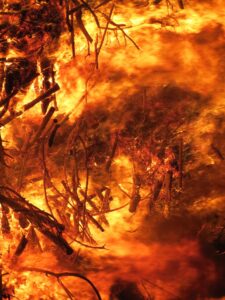Fire prevention and control are critical for maintaining safety in mining environments. The Mine Safety and Health Administration (MSHA) has established fire safety regulations to protect workers from mine fires. Compliance with MSHA fire prevention and control standards is a legal requirement and key to minimizing risks. This article will explore MSHA fire safety regulations, best practices for prevention, and equipment needed to mitigate fire risks. By understanding these guidelines and implementing fire safety measures, mining operations can improve preparedness and foster a safer work environment.
Understanding MSHA Fire Prevention and Control Requirements
The Mine Safety and Health Administration plays a critical role in enforcing safety standards for mining operations, especially fire prevention. MSHA’s regulations aim to minimize fire and explosion risks, protecting miners and operations from accidents. These standards include equipment maintenance, ventilation, and emergency response planning. MSHA requires mining operations to implement fire prevention measures appropriate for specific environments and risks. Miners must be trained in fire safety, fire suppression systems must be operational, and regular inspections must detect fire hazards. Adhering to these standards ensures the health and safety of workers in risky environments.
Recent Updates to MSHA Fire Safety Regulations
In recent years, MSHA has updated fire safety regulations to address emerging risks and improve safety in mining operations. These updates reflect technological advances, changes in mining practices, and lessons learned from past incidents. The updated regulations emphasize robust fire detection systems, automated suppression systems, and increased scrutiny on electrical equipment maintenance. MSHA has introduced stricter requirements for ventilation systems, recognizing ventilation’s role in reducing fire risks. With these updates, MSHA aims to ensure mining companies take proactive steps to mitigate fire risks before emergencies arise.
Key Fire Safety Practices for Mining Operations
Ensuring fire safety in mining operations requires a comprehensive approach that includes preventive measures, early detection systems, and rapid response protocols. Some of the key fire safety practices that mining operations should implement include:
- Regular Inspections: Conduct regular inspections of equipment, electrical systems, and ventilation systems to identify any potential fire hazards.
- Fire Suppression Systems: Install and maintain automated fire suppression systems that can quickly respond to any fire threat, especially in high-risk areas.
- Proper Storage of Flammable Materials: Ensure that combustible materials, such as fuels and lubricants, are stored safely and away from ignition sources.
- Monitoring Equipment: Use fire detection systems that include smoke and heat sensors to provide early warning of potential fires.
- Training Workers: Ensure that all workers are trained on fire safety measures, how to use fire extinguishers, and how to evacuate the site in case of fire. Using platforms such as MSHA Safety Services helps keep employees up to date.
These practices, along with compliance with MSHA fire prevention standards, help reduce the likelihood of fire-related incidents and improve the overall safety of mining operations.
Common Fire Hazards in Mining and How to Address Them
Mining operations face several common fire hazards that must be addressed to ensure safety. These hazards include:
- Combustible Dust: In mines, coal dust, metal dust, and other combustible materials can ignite when exposed to sparks or heat. To reduce this risk, mining operations should implement dust control measures, including the use of water sprays and ventilation systems.
- Flammable Gases: Gases such as methane and hydrogen sulfide are common in underground mining environments and can easily ignite if not properly controlled. MSHA mandates regular gas monitoring and ventilation to keep the levels of these gases within safe limits.
- Electrical Failures: Electrical equipment and wiring are common sources of fire in mining operations. Regular electrical inspections and proper maintenance can prevent sparks and overheating that could lead to fires.
- Overheated Machinery: Mining equipment that is poorly maintained or overworked can overheat, sparking fires in high-risk areas. Routine maintenance and proper machine operation are essential to preventing this hazard.
By identifying these common fire hazards and implementing preventive measures, mining operations can greatly reduce the risk of fire-related accidents.
Best Practices for MSHA Fire Risk Assessment
Conducting a thorough fire risk assessment is a crucial part of ensuring compliance with MSHA fire prevention standards. A comprehensive risk assessment involves evaluating all areas of the mine to identify potential fire hazards, assessing the effectiveness of existing fire safety measures, and determining the likelihood of a fire occurring.
Some best practices for conducting an effective fire risk assessment include:
- Conducting Thorough Inspections: Regularly inspect equipment, ventilation systems, and high-risk areas of the mine for potential fire hazards.
- Assessing Equipment Maintenance: Evaluate the maintenance schedules and records for all mining equipment to ensure it is operating safely and that potential fire risks, such as overheating or electrical failure, are addressed.
- Analyzing Fire Suppression Systems: Ensure that all fire suppression systems are in working order and capable of responding quickly to a fire emergency.
- Evaluating Worker Training: Review training records to ensure that workers are knowledgeable about fire safety procedures and can respond appropriately in case of an emergency.
A well-executed fire risk assessment helps mining operations comply with MSHA standards while ensuring the safety of workers and the integrity of the mine.
Equipment and Tools for Fire Prevention in Mines
Effective fire prevention requires the right equipment and tools to detect and respond to potential fires quickly. Some essential equipment and tools for fire prevention in mining operations include:
- Fire Extinguishers: Ensure that fire extinguishers are available in key areas of the mine and that they are easily accessible and well-maintained.
- Fire Detection Systems: Install automated fire detection systems equipped with smoke, heat, and gas sensors that can provide early warnings of potential fires.
- Fire Suppression Systems: Automated fire suppression systems, such as sprinklers and foam-based systems, can suppress fires in the early stages, preventing them from spreading.
- Ventilation Equipment: Proper ventilation equipment is essential to control the levels of flammable gases and prevent fire hazards. Ensure that ventilation systems are regularly maintained and functioning effectively.
By utilizing the proper fire prevention equipment, mining operations can reduce the risk of fire and ensure the safety of their workers.
The Role of Ventilation in Fire Control and Prevention
Ventilation plays a crucial role in preventing and controlling fires in mining operations. Proper ventilation systems help to dissipate dangerous gases, such as methane, that could otherwise build up to hazardous levels. By maintaining constant airflow, these systems reduce the chances of gas explosions or fires that can result from the accumulation of combustible gases.
In addition to gas control, ventilation systems also help to cool down equipment and reduce the risk of overheating, which is another common source of fire in mines. Regular maintenance and monitoring of the ventilation systems ensure that they remain effective and can mitigate fire hazards.
Developing and Implementing an MSHA Fire Safety Plan
Developing and implementing an MSHA fire safety plan is essential for ensuring compliance with MSHA regulations and safeguarding workers. This plan should include clear procedures for fire prevention, detection, suppression, and emergency response. Key components of the fire safety plan should include:
- Fire Prevention Measures: Establish policies and procedures for preventing fires, including equipment maintenance, proper storage of combustible materials, and regular fire risk assessments.
- Emergency Response Plan: Develop a comprehensive emergency response plan that includes evacuation routes, designated assembly points, and procedures for alerting emergency responders.
- Fire Safety Training: Ensure that all workers are trained in fire prevention, the use of fire suppression equipment, and how to respond in the event of a fire.
A well-developed fire safety plan helps ensure that the mine is prepared to handle fire emergencies and that workers are equipped with the knowledge to stay safe.
Training and Certification for MSHA Fire Safety Compliance
Training and certification are essential components of ensuring MSHA fire safety compliance. All workers in the mining industry should undergo regular fire safety training to learn about fire hazards, emergency response procedures, and the proper use of fire suppression equipment. If you are unsure what training your team needs, please visit the MSHA Safety Services website for more information.
MSHA also requires that mining companies maintain training records to demonstrate compliance with fire safety regulations. Regular certifications and safety audits help ensure that training programs are up to date and that workers are prepared to handle fire emergencies safely.

Successful Fire Prevention Strategies in Mining
Several mining operations have successfully implemented comprehensive fire prevention strategies that comply with MSHA standards. These strategies often involve a combination of regular inspections, fire suppression systems, ventilation management, and worker training. Successful operations also conduct frequent fire drills and maintain up-to-date fire safety plans that include clear procedures for both preventing and responding to fires.
By adopting these strategies, mining companies can reduce the risk of fires, comply with MSHA regulations, and ensure a safer working environment for all.
How to Handle Fire Emergencies in Underground Mines
Handling a fire emergency in an underground mine requires a well-coordinated response. The confined space, combined with the presence of flammable gases and materials, makes mine fires particularly dangerous. Key steps to handling fire emergencies include:
- Activate Fire Suppression Systems: Immediately activate fire suppression systems to contain the fire before it spreads.
- Evacuate the Area: Ensure that all workers evacuate to designated assembly points quickly and safely.
- Alert Emergency Responders: Notify local emergency services and provide them with details about the fire and the location of workers.
- Maintain Communication: Keep open lines of communication between emergency responders, mine managers, and workers to ensure that everyone is informed and accounted for.
Having a clear and well-rehearsed emergency response plan is essential for ensuring a swift and effective response to fire emergencies.
The Consequences of Non-Compliance with MSHA Fire Standards
Failing to comply with MSHA fire prevention standards can have serious consequences. Non-compliance can result in fines, shutdowns, or even the closure of a mine. More importantly, it can lead to accidents, injuries, and loss of life. Mining companies that fail to adhere to MSHA regulations are not only putting their workers at risk but also their reputation and bottom line.
By ensuring compliance with MSHA fire safety standards, mining companies can avoid these severe consequences and create a safer, more efficient working environment.
Ensuring Long-Term MSHA Fire Safety Compliance and Preparedness
Ensuring long-term compliance with MSHA fire safety regulations requires a commitment to continuous improvement. Mining companies must regularly update their fire safety plans, conduct routine inspections, and invest in the latest fire detection and suppression technologies.
Ongoing training and certification for workers and managers are essential to keep everyone prepared for emergencies. By fostering a culture of safety and preparedness, mining operations can reduce the risk of fire-related incidents and ensure that they remain in compliance with MSHA standards.

